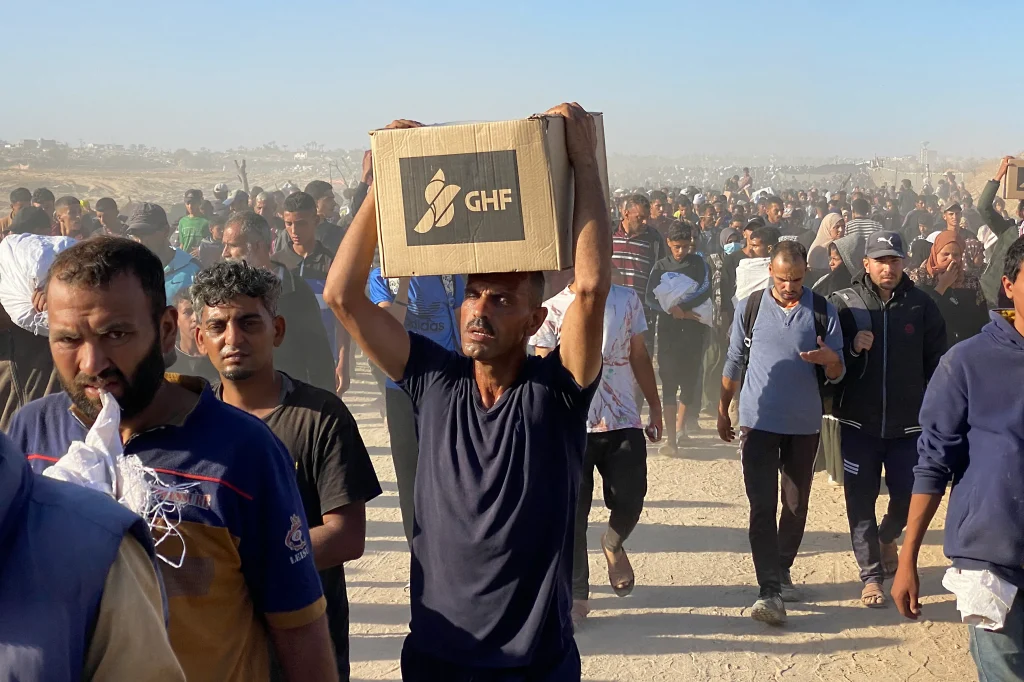A US- and Israeli-backed private aid organisation tasked with distributing food in Gaza has acknowledged it cannot meet the immense humanitarian needs in the besieged territory, where many residents are facing famine-like conditions.
The Gaza Humanitarian Foundation (GHF), which began operations in May, has faced widespread criticism over its ability to deliver aid effectively, as well as repeated deadly incidents near its distribution sites.
On Saturday, Gaza’s civil defence reported that Israeli forces killed at least 17 people, including eight who were queuing for food.
GHF’s interim executive director, John Acree, said in a statement that while the organisation is “delivering aid at scale, securely and effectively,” it cannot fully address the crisis because “large parts of Gaza remain closed.” He added that GHF was in talks with Israel to open more distribution sites in the northern part of the enclave.
“The people of Gaza desperately need more aid,” Acree said, adding that GHF was ready to work with other humanitarian groups to increase its reach.
Since GHF began distributing meals last month, Gaza health officials report that at least 450 people have died and nearly 3,500 have been injured by Israeli fire near aid distribution points. Witnesses and rescue teams blame the organisation for failing to ensure safe delivery, but GHF has denied responsibility for the fatalities, arguing that many deaths occurred near UN aid convoys instead.

The United Nations has branded the GHF system a “failure,” while several international aid groups have questioned its transparency and impartiality.
On Monday, Doctors Without Borders president Christopher Lockyear condemned the approach, saying it is “dehumanising and dangerous.”
Despite the criticism, Israel’s military operations in Gaza continue, even as international focus has shifted to Israel’s escalating conflict with Iran since mid-June.
Israel maintains tight restrictions on foreign media access to Gaza, making it difficult to independently verify casualty figures.
The Israeli army told AFP it was reviewing the latest reports of deaths near GHF distribution sites. In previous incidents, Israeli forces have said they fired on crowds they considered threatening, often after warning shots. However, witnesses have described injuries caused by drone strikes and tank fire.
In one of the latest incidents, Gaza civil defence spokesman Mahmud Bassal said that three people were killed in southern Gaza, while five others died in the central Netzarim corridor, where thousands gather daily, hoping to receive food from GHF centres.
Meanwhile, the UN’s World Health Organisation warned that Gaza’s medical infrastructure is nearing total collapse, urgently calling for fuel deliveries to keep hospitals operational.
The recent war began after Hamas launched an assault on Israel in October 2023, killing 1,219 people. Since then, Israel’s bombardment in Gaza has claimed at least 55,908 lives, mostly women and children, according to the territory’s health ministry.
The United Nations and numerous other international organisations regard these figures as credible.


 Trending
Trending 